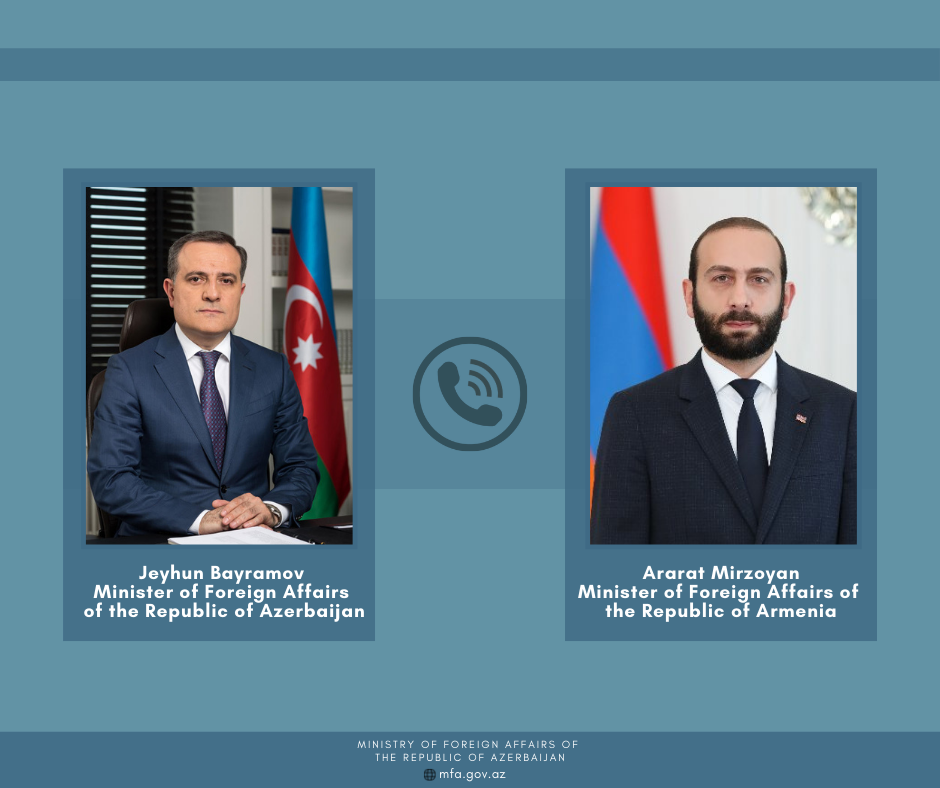Late April musings on peace: Steadfastly determined Baku vs incessantly vacillating Yerevan

By Orkhan Amashov
Now that April is drawing to a fitful close, it is a chronologically auspicious time to throw a piercing glance at the developments that took place on the Baku-Yerevan front over the past month. It is the right moment to establish if, in the light of the high expectations engendered by the latest Brussels meeting held in a trilateral format under the auspices of the EU, the diplomatic progress made so far could be deemed as ‘satisfactory’.
Although it would probably require some stretching of the imagination to unreservedly assert that the month is about to end on a high note, it is nevertheless not untrue that the key minimum objective has been achieved - the wheels of the direct peace talks have been set in motion and the bilateral form was born, and cannot and will not be returned to whence they came.
On 6 April, Azerbaijani President Aliyev and Armenian Prime Minister Pashinyan agreed to instruct their foreign ministries to start working on a peace treaty, which was perceived as the inception of a qualitatively new concept. This was also the moment at which, for the first time since November 2020, the EU did appear to be not just on a par with the Kremlin in terms of its involvement in the post-conflict normalisation, but also to muscle in to the extent of curbing the rival centre’s clout.
Two telephone conversations that took place between the Azerbaijani and Armenian Foreign Ministers, Jeyhun Bayramov and Ararat Mirzoyan, respectively, marked the onset of bilateral interaction. As a result of the exchanges in question, the sides agreed to convene the meetings of the Joint Border Commission and Working Group to develop a peace treaty, and came to an understanding on the parameters of the former.
The agreement achieved on 6 April was indeed a breakthrough. The first Bayramov-Mirzoyan chat over the phone was symbolically and practically crucial. The results, as far as one can ascertain from official sources as emanating from the second telephonic conversation, are limited in scope, for aside from stating that a certain agreement on “the parameters of the Joint Border Commission”, it does not specify anything as such. But it is worth mentioning that no specific deadline as to the beginning of the bilateral work has yet been clarified. The Commission and Working Group are set to convene in the fullness of time.
In the interim, it seems that the bare essential minimum, as specified in the trilateral Brussels meeting, has been achieved, although some other practical measures could have been implemented, although this has not been the case. Baku has done everything possible to maintain the momentum and expedite the process. Yerevan was not wholly up to scratch in diplomatic proactivity. Throughout April, Armenia downplayed the tentative inception of the bilateral format, made several references to the OSCE Minsk Group, somewhat retrograding the process through vacillations and episodes marked with obdurate stubbornness.
Pashinyan, at present, has two fundamental difficulties. He has not yet achieved a sufficient degree of internal consolidation to propound his agenda. The forces opposing him have sufficient sway on society. The revenge-driven proportion of the political spectrum is too strong to be dispelled with ease.
To be fair, the Armenian prime minister showed some resolve in March and early April, then his ship ran aground on the opposition-engineered rockstrewn beaches of untrammeled vacuity. Furthermore, the Ukrainian crisis has been unhelpful. Caught between a rock and hard place, he vacillated and then prostrated himself in front of the Kremlin. The provisions entailed in Articles of 24-28 of the 19 April joint Russo-Armenian declaration heavily reasserted the Kremlin-dominated trilateral format, without in any way recognising the nascent bilateral framework involving Baku and Yerevan.
There is much room for conjecture as to whether Moscow or Brussels will have a more prevailing role on the way to engineering a final peace deal. In November 2020, when the ceasefire was signed, the EU was on the sidelines. The Brussels format was a late addition. In December 2021, it appeared to be mostly concerned with the semi-auxiliary matters of a humanitarian nature, falling outside the rubric of the Kremlin-mediated platform.
As of April 2022, it could be confidently asserted that this is no longer the case, for the EU format has achieved a sufficient degree of pervasiveness. The likely scenario is that both Brussels and Moscow will continue to be closely involved, but for all its enhanced participation and financial incentives, the EU lacks the security element, which Russia has provided via the presence of the peacekeeping forces.
The whole process is far away from being a smooth sail. Choppy waters are omnipresent and snags may crop up any time from sources hitherto unknown. Baku is in a hurry and, as a victor, in the position of setting the agenda. Yerevan, except some spells characterised with a relative rise of sense of urgency, tends to vacillate. Moscow is constructive and helpful, provided the process is not out of its control, but is currently distracted. Brussels has upgraded its involvement, increasingly recognised as a potent force for good, yet faces a considerable challenge from the Kremlin.
Here we are to serve you with news right now. It does not cost much, but worth your attention.
Choose to support open, independent, quality journalism and subscribe on a monthly basis.
By subscribing to our online newspaper, you can have full digital access to all news, analysis, and much more.
You can also follow AzerNEWS on Twitter @AzerNewsAz or Facebook @AzerNewsNewspaper
Thank you!
